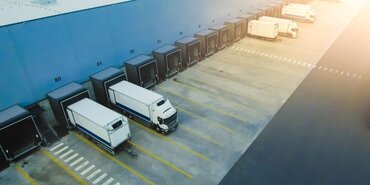TT Talk - The opportunity of weighting

As should be expected when regulations are tightened, attention is turning to solution providers to deliver accurate measurement of gross mass at various points through the container supply chain. TT Club would welcome hearing from potential providers so as to keep its membership informed.
While the regulatory change in relation to verification of gross mass of containers is articulated in the international maritime legislation - the Safety of Life at Sea Convention (SOLAS) - there is no doubt that the accurate gross mass needs to be determined at the point that the container packing is completed, prior to the first part of the journey starting. The probability of incidents and injury is far greater on land, albeit that the potential impact arising from a containership incident is significant.
"The probability of incidents and injury is far greater on land"
Despite the importance of knowing weight (and distribution) of cargo before it enters a road or rail network, most attention has been towards delivering functional and efficient innovations at the port area to ensure that weighing can be done without disruption to operational flows. The Port Equipment Manufacturers Association (PEMA) issued this useful guidance document.
There is substantial logic in this concentration at the port, since a container once packed may be expected generally to proceed from origin to destination without the cargo gross mass changing. As a result, the port is a key nodal point at which to verify the gross mass prior to planning and loading a ship. Furthermore, it may be reasonable to question whether there is an implied duty to check the verified weight within the revised regulation. On the face of it, all parties should be able to rely in good faith on the veracity of the verified gross mass given by the shipper, but accurate declaration has been embedded in the regulation already.
"it may be reasonable to question whether there is an implied duty to check the verified weight"
It might be pointed out that a little knowledge is a dangerous thing. Not only will the verified gross mass impliedly require contractors to consider related regulations (such as whether overweight under the CSC plating or overloaded for the entirety of the surface transportation), but also to apply a reality check - if N pallets or widgets are verified at one weight, can a similar shipment subsequently be verified substantially differently?
In many commercial settings, shippers may choose not to opt for 'Method 2'. Indeed, the IMO Guidelines already stipulate that it is 'inappropriate and impractical' to use Method 2 for certain cargoes, such as scrap metal, unbagged grain and other cargo in bulk. For these - which necessarily will include flexitank and ISO tank container movements - it will be necessary to use Method 1, weighing the packed or laden unit.
Accuracy and simplicity of weighing early in or prior to commencing the movement may be a challenge. Traditional weighbridges - assuming that enough capacity is available - have to make assumptions about the remainder of the rig, including fuel, which may reduce accuracy or increase process. 'Weigh in motion' systems may offer some benefits. It is known that some are investigating the possibility of durable compression fittings for trailer twistlocks. However this is achieved, it is also necessary to consider the workflow and contractual nexus - the shipper remains responsible for communicating the verified gross mass, while the trucker or other transporter is generally contracted by the carrier.
Whatever apparatus is utilised will need to be 'calibrated and certified' in the particular jurisdiction in which it is used. While weights and measures regulations will generally already exist, there is currently no single international standard for accuracy of measurement, which raises the spectre that there will - at least for the time being - not be consistency. Furthermore, innovators will be discouraged by the potential of having to meet differing standards or even be faced by protectionist barriers.
Due to the additional safety benefits inherent in systems that measure eccentricity in the load, the TT Club is interested in the development of those that are based around the corner fittings of containers. There are spreader based twistlock load sensing technologies already successfully deployed that achieve both weight and eccentricity measurement, and can be implemented at any point the container is lifted, for example at a railhead as well as the port. Similarly, the Club has heard of a jack based system, which can be used wherever the container is landed. Other innovations are looking at trailer, railcar, mafi and side-loader scenarios.
Necessity is the mother of invention. The TT Club invites its readership to share information about emerging technology solutions relating to this verification of gross mass of containers.
TT Club invites its readership to share information about emerging technology solutions relating to this verification of gross mass of containers
We hope that you have found the above interesting. If you would like further information, or have any comments, please email us, or take this opportunity to forward to any colleagues who you may feel would be interested.
We look forward to hearing from you.
Peregrine Storrs-Fox
Risk Management Director, TT Club
- Author
- Staff Author
- Date
- 17/06/2015





